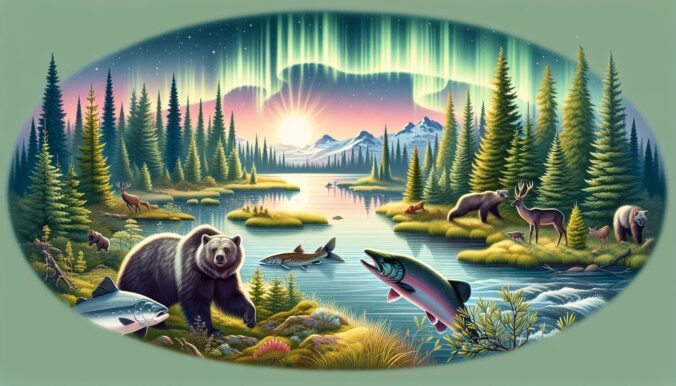Finland, a country known for its stunning natural landscapes and picturesque forests, is also home to a rich and diverse array of wildlife. From the vast taiga forests in the east to the coastal wetlands in the west, Finland boasts a wide range of habitats that support a thriving ecosystem of plants and animals. In this article, we will explore the biological diversity of Finland and the importance of preserving its unique flora and fauna.
The Finnish Landscape
Finland’s unique geography and climate have fostered a rich diversity of habitats that support a wide variety of plant and animal species. The country is known for its dense forests, pristine lakes, and rugged coastlines, all of which provide important habitats for a range of wildlife.
One of the most iconic features of the Finnish landscape is its taiga forests, which cover a significant portion of the country’s land area. These boreal forests are home to a multitude of plant and animal species, including bears, wolves, lynx, and a variety of bird species. Finland’s forests are also rich in plant life, with a wide variety of tree species such as spruce, pine, and birch.
In addition to its forests, Finland also boasts a network of lakes and rivers that are teeming with life. These waterways provide important habitats for fish, amphibians, and waterfowl, and are essential for maintaining the country’s biodiversity.
Flora and Fauna
Finland is home to a diverse array of plant and animal species, many of which are unique to the region. The country’s wildlife includes large mammals such as brown bears, elk, and reindeer, as well as a variety of bird species like capercaillie, golden eagles, and Whooper swans.
The plant life in Finland is equally diverse, with a wide variety of tree, shrub, and herb species found throughout the country. The forests of Finland are dominated by coniferous trees such as spruce and pine, but also contain a rich understory of plants including bilberries, lingonberries, and mosses.
Conservation Efforts
Despite its rich biological diversity, Finland’s natural habitats are facing increasing threats from human activities such as deforestation, pollution, and climate change. In recent years, the Finnish government and various conservation organizations have implemented a number of initiatives to protect the country’s flora and fauna.
One such initiative is the Natura 2000 network, which aims to protect Europe’s most valuable habitats and species. In Finland, the Natura 2000 network covers a significant portion of the country’s land area, including important habitats such as old-growth forests, wetlands, and coastal areas.
In addition to the Natura 2000 network, Finland has also implemented a number of conservation programs aimed at protecting specific species such as the Saimaa ringed seal and the Siberian flying squirrel. These programs involve habitat restoration, monitoring of populations, and public education efforts to raise awareness about the importance of biodiversity conservation.
Conclusion
Finland’s rich biological diversity is a testament to the country’s unique natural heritage and the importance of preserving its flora and fauna for future generations. By implementing conservation initiatives and raising awareness about the importance of biodiversity, Finland can ensure that its forests, lakes, and coastlines continue to support a thriving ecosystem of plants and animals. As visitors and residents alike explore Finland’s stunning landscapes, they can appreciate the beauty and diversity of the country’s wildlife, and contribute to efforts to protect and conserve its natural heritage.

